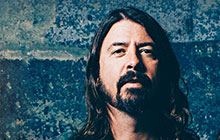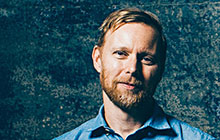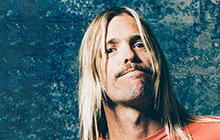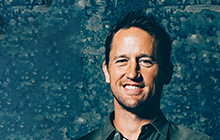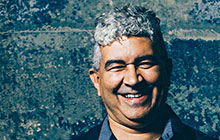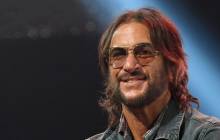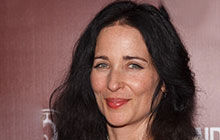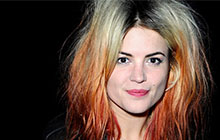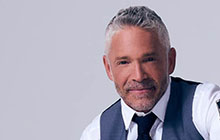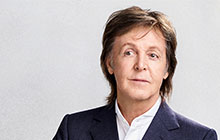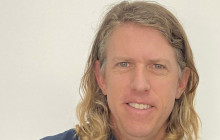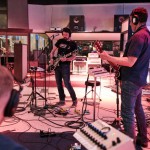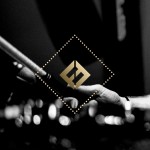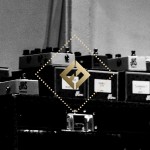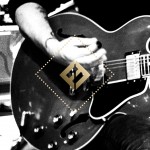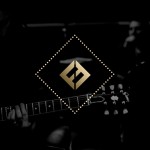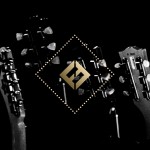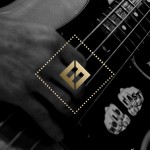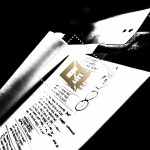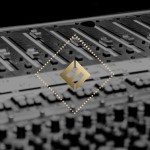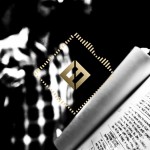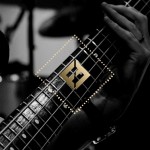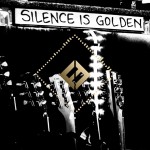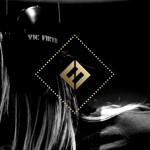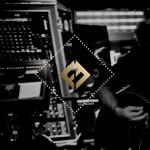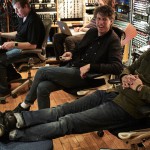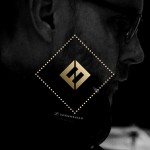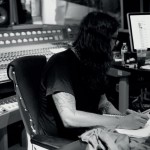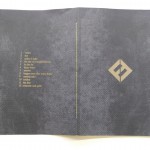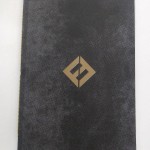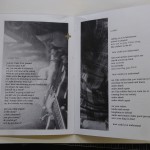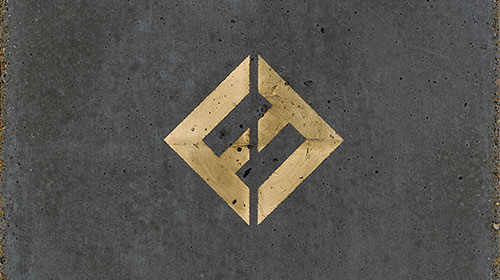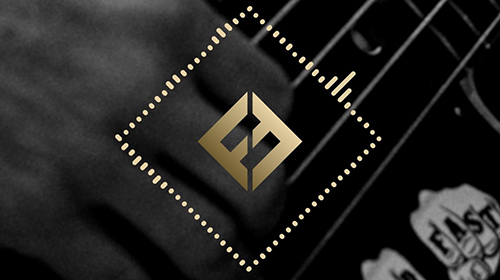Session Information
2015 had been a year of mixed emotions for Foo Fighters. It had high points – huge stadium shows across the world and performing for David Letterman’s last ever ‘Late Show’, but it also had low points – Dave’s accident in Sweden leading to a broken leg, the resulting issues that it caused and the tour being cut short due to the horrific terror attacks in Paris, France.
It was also an exhausting year for the band which they would end by recording and releasing the ‘Saint Cecilia EP’, a collection of five new original songs. A free release for the fans, it was partly as a thank-you for their support, but also as something of a going away present. Alongside its release, Dave Grohl announced the band was going to take a hiatus from the limelight, get some well-needed rest and recuperate. “I thought the best thing for the band would be just to stop and get away from it for a while,” decided Grohl. Keen to avoid any media frenzies about the bands future as had occurred the last time he announced a break, Grohl made it clear the band would be back – he just didn’t know when.
Whilst he wouldn’t put a time frame on the hiatus publicly, he had informed his bandmates and family that the goal was to take an entire two years out. “In order to take care of myself, I needed to get away from everything,” said Grohl, adding that he also planned to not even pick up an instrument for the first year. The reception from his band was a mixture of surprise and disbelief, but in a positive sense – “I never really put too much faith in the whole ‘hiatus’ thing” said guitarist Chris Shiflett. “Because, you know, in this band it’s usually shorter than is stated. I never really believed it”.
Their last hiatus which started at the end of 2012 had lasted mere months and Shiflett was once again spot on this time around. Whilst still recovering physically and mentally at home Grohl soon started getting restless, thinking about his next project. At one point he received an offer to direct a feature-length film, something he’d never done before. Always up for a challenge, it was an offer he seriously considered but soon realized the time sink such a project would entail - “The great thing about being in the Foo Fighters is when we have an idea and we want to do something, we just go like that. We do it. The movie world isn't like that... It can take years and years and years.” Passion was also a problem with some of the offers coming in. Without the personal attachment to a certain project, Grohl felt he would need to “manufacture the inspiration”, something he’d never have to do with the band, or any of his own pet projects like ‘Sound City’. Realizing that taking on the new challenge could jeopardize the Foo Fighters, and lacking true enthusiasm, he chose to respectfully decline the movie offers - for now at least.
Grohl knew that whilst he’d almost shunned it entirely once before, music was always going to be the art which kept him going. As his physical recuperation continued, he’d find himself regularly peeking into the recording studio in his garage – think about playing – and then walk out. The process continued until one day he decided to play the drums for a few minutes at a time if only to help in the rehabilitation of his injured limb.
Then came the inevitable step of setting up microphones, picking up some guitars and running a Pro Tools recording session. Adhering to the “always record” mantra Grohl would play anything that sprang to mind, laying down drum beats first before layering guitar ideas over time.
This process continued for several months, as Grohl bounced between family life, physical recovery and experimenting musically. “Six months went by, and I just hit this vein where riffs and melodies started coming out,” said Grohl of the experience. One of the first new songs he would write was ‘Run’, a typically heavy, guitar-shredding Foo Fighters song. More followed, including the equally raucous ‘La Dee Da’, although at this stage the demos were merely untitled instrumentals. Grohl soon found himself sitting on half a dozen songs and ideas and so the next step was sending them to the rest of the band to see what they thought. Whilst he had many songs, Foo Fighters were still only six months into a supposed two-year break, and some members of the band were using the free time to work on their side projects. “Am I crazy? Or is this a record?” Grohl asked his bandmates. “Both” was their reply. For guitarist Chris Shiflett the timing fell just right, having just completed recording for his solo record, ‘West Coast Town’. “I remember being really happy that I’d gone and done that when I did. Had I waited another couple of months it wouldn’t have been possible” noted Shiflett. Break or no break, Grohl was amped, the band was on board and it wasn’t long before thoughts turned to actually heading into a studio to record another album.
Before that though, the so-far instrumental demos would need some lyrics. For the band’s previous album, Sonic Highways, Grohl had written the lyrics for each song at the very last minute, taking inspiration from his experiences in each of the eight cities they recorded in, as well as interviews with influential people in each place. For this new batch of songs, it would be quite the opposite, as Grohl planned to get most of the lyrics written well in advance of any recording. There was still no clear plan for that recording at this stage but Grohl decided instead of writing at home, amongst the hullabaloo of three young children and daily family life, he would take a short solo vacation.
He didn’t plan to go too far. Ojai is a small city in Ventura County, California, just over an hour’s drive from his home. The surprisingly rural location is a popular getaway for creatives looking to escape central Los Angeles, a place of relative peace compared to the hustle and bustle of the big city. Grohl rented a house within an olive-tree farm in the city and got to work. “I spent most of my time just singing things off of the top of my head,” said Grohl of the unstructured approach to writing. Much of the time he wouldn’t even write anything down on paper - “I wasn't really playing the word game in a journal and cutting and pasting, like I had done before, but just really singing things unfiltered as I was drunk in my underwear.” Following the different approach to writing for Sonic Highways for these songs Dave returned to more familiar ground, writing lyrics more personal to himself - ‘Arrows’ was another song he’d write about his mother Virginia, referencing her struggles raising two children alone. “As a parent now, I understand more how much of a struggle that must have been for her to keep the family not only together, but happy – which we were.”
Just before Grohl headed away Donald Trump had been officially confirmed as the Republican candidate for the 2016 Presidential Election. The political climate at that time was therefore very much on his mind and whilst Grohl claims he isn’t an outwardly political person, he believes it’s “pretty easy to figure out” where his beliefs align. Indeed, Foo Fighters performed several times for President Barack Obama during his presidency and the band had also supported the 2004 Democrat candidate John Kerry. Clearly, Donald Trump was not a man he was likely to favor - “I'm looking at a candidate that has a blatant disregard for the future environmentally when it comes to women's rights, diplomatically” said Grohl of his concerns. “I have three daughters that are going to survive me for decades – how are they going to get on unless there's some positive and progressive change?”
Whilst several of the lines he was writing had political references, Grohl was keen to ensure that nothing too extreme crept in, adamant that Foo Fighters were not going to become outwardly political. “When I’m writing lyrics, I’m not so politically direct that it would sound like a Rage Against The Machine album, but what I’m trying to do is express frustration at how everyone is so divided.”
Grohl experienced a feeling of “hopelessness and despair” upon hearing the news of Trump’s nomination, feeling a desire to just run away it all, feelings that led to the lyrics for the song ‘Run’, echoing those desires to “find a place where you feel free, and there’s peace”.
There was, according to Grohl, a lot of other things to write about at this time other than politics – his experience as a father and family man, new musical experiences and other events that had impacted his life. “I look at all of the different periods of time where I've written lyrics and they all have their own references and different phases. This one came out pretty clear. I'm a father now, I have to consider a lot more than I used to, and I think I've realized we're not all as free as we were before.”
The lyrics for ‘La Dee Da’ referenced the teenage years of his life, growing up in a blue bedroom in Springfield, Virginia. One of his friends at that time was a big fan of heavy, industrial rock bands and got Dave and their other friends into bands such as Coil, Whitehouse, Hunting Lodge, Psychic TV and Death In June. Unbeknownst to the youngster at the time Death In June had been linked to several far-right fascist groups, often using Nazi imagery in their live performances. To Grohl they were just a cool punk band and whilst he had learned of their ideologies in later years, it had slipped his mind again when he decided to reference them in the song. “Of course, I didn't think of that as I was writing the lyric!” he would later assure fans and critics.
Another name mentioned in the lyrics Grohl penned for ‘La Dee Da’ was Jim Jones, a religious cult leader who in 1978 initiated a now infamous mass suicide event in Jonestown, Guyana. Whilst Grohl was certainly not a fan of Jones or supportive of what he did in any way he did find his story and the events of that day interesting. At one point during his youth, he decided to try and paint a portrait of Jones, using an old bedsheet as his canvas which he stuck to his wall to create a flat surface. When he was done, he removed the sheet from the wall only to discover the paint had bled through, leaving him with a crude mural of the cultist on his wall. This story is one of several he’d reference in the track.
For another song he would sing about ‘drinking dirty water’ but his words were not a literal observation of any sanitary issues in the world, instead the dirty water served as a metaphor for “that black cloud of oppression you feel sometimes” according to Grohl. “It’s that feeling where you’re bleeding dirty water and breathing dirty sky – you just kind of feel polluted by that sort of dark energy of the collective psyche of the world.”
Dave Grohl’s week in Ojai had been deemed a productive one by the man himself and so with around a dozen songs ready to go it was time for Grohl to round up the troops and begin the next phase of what had now clearly become the production of their ninth studio album.
As the band was publicly still on a hiatus it was decided that all future work on the album would remain as secretive as possible. No public announcements were planned until the recording was complete. Owing to the fact nobody was expecting an album any time soon, this meant the band was afforded similar freedoms as they had when recording the Saint Cecilia EP in similar secrecy in 2015.
To keep things under wraps rather than head to their own Studio 606 facility which had frequent visitors the group instead headed to the less well-known Fonogenic Studios, located in Van Nuys, California to start pre-production work. The studio is part-owned by Rami Jaffee alongside multi-instrumentalist Ran Pink, their creative partnership known as Pink Jaffee. Jaffee had been with Foo Fighters as a session and touring musician since 2005 and whilst Grohl had spiritually considered him a Foo Fighter for almost a decade by this point it was only now that it was decided to make it official. Going forward, Jaffee was to be considered the sixth full-time member of the band, which among other things meant he would be credited as a songwriter on many of the songs they worked on at the studio.
The band spent several weeks at Fonogenic in the fall of 2016, developing the songs Dave had recorded in his garage a few months earlier. According to guitarist Chris Shiflett, the band spent a lot of time shaping each song, recording lots of different demos, different versions of Dave’s song ideas. “That’s usually the method of this band, we just demo and demo and demo and do them over and over and tweak them along the way,” said Shiflett of the iterative process.
Once the band was happy the songs were at an advanced enough stage, several decisions needed to be made to move things forward, one of which being how, and where, the final album would be recorded. Ever since the 2005 half acoustic, half rock double album ‘In Your Honor’ there had always been a grand scale idea behind each Foo Fighters album, a USP. Feeling that this trend should continue, shortly after completing recording for ‘Sonic Highways’ in 2014 Grohl began thinking up different ways the band could record their next record. A couple of years earlier he mentioned to the press that they wanted to record a future album in space, an “analog moonshot”. He may have been joking on that occasion but the idea he initially settled on wasn’t too many steps down on the craziness scale.
The grand plan centered around The Hollywood Bowl, a live amphitheater in Los Angeles which had in the past played host to hundreds of huge artists including The Beatles, Pink Floyd, Elton John, and Prince. The show Grohl planned to host at the venue was different from anything it had seen before, however. A recording studio was to be constructed on the stage, complete with a control room, isolation booths and all the associated equipment needed to record an album which would then be recorded live on stage. 20,000 lucky fans would be invited along to watch, giving the public a unique chance to see the band at-work as they put together the record. At the time he conceived of the idea he believed nobody else had ever attempted such a project, it would be a world first.
Grohl was very excited about the concept, although his bandmates were going to take some convincing - “Are you out of your fucking mind?” was their initial response. As it turned out though, he wouldn’t need to get them on board as unfortunately for Grohl long before he could even think about carrying out the idea, he was beaten to the punch.
In January 2015 singer-songwriter PJ Harvey recorded her album ‘The Hope Six Demolition Project’ as an art installation at Somerset House in London, England. Over the course of the month members of the public were invited to the venue to watch Harvey perform, with the finished album released in April 2016. Grohl later caught wind of the project and whilst it was not the same as his idea, he decided it was close enough that he decided to scrap the Hollywood Bowl plans.
With that idea quashed, a new one was required. Perhaps reconsidering that space idea for a while, Grohl soon realized the strangest thing they could do after so many outlandish concepts was the most common – walk into a professional recording studio and just record an album. No flashy concepts, no world firsts, no garage - just create a record the old-fashioned way, as they had last done for a Foo Fighters album in 2002.
Whilst there would be no grand concept around the album Grohl did have a couple of other changes in mind. The first was the producer. Whilst very happy to work with his friend Butch Vig on their past two albums, he felt a change was needed for the benefit of the music. That change came in the form of Greg Kurstin. Kurstin is most well-known in the music industry for his work as a producer, working with artists such as Adele, Sia, and P!nk. However, he also had his own band, The Bird And The Bee, which is how Grohl first became aware of him.
Driving in his car Dave heard the band on the radio, one he’d previously never heard of. The song he heard was “Again And Again”, from their 2007 eponymous album and he was enamored by the track, dazzled by the melodies and harmonies. Like any regular music fan, he rushed out to buy the album as soon as he could.
Fast forward to 2013 and whilst on a break in Hawaii Grohl spotted Greg at a restaurant. Kurstin had a house on the island and despite his own huge fame, Grohl became a little star struck. “Oh my God, that’s the guy from The Bird And The Bee, holy shit,” he thought to himself before plucking up the courage to go over and introduce himself. His first point of inquiry was to ask about the status of Bird And The Bee, with Kurstin explaining that plans were at that time on hold as he had work to do producing. It was at this point Grohl became aware of his other work – Sia, Adele, and Beyonce were all upcoming clients at the time. After that first meeting, the pair became friends, meeting up whenever Grohl would visit Hawaii, talking music and discussing each other’s latest projects.
Once the decision had been made that they were indeed going to record another album, Kurstin was the first name that came to mind when Grohl considered who might produce it. Greg had never made a rock record before, and Dave was keen to bring his extensive knowledge and sense of melodies to the band's work. “I thought this might be a perfect match” recalled Grohl, planning to mix “our noise and Greg’s big brain and all of his sophisticated arrangements and composition.” The band had experimented with acoustic material in the past and brought the two together, but Grohl was keen to further explore a diverse sound and decided Greg was the ideal man to help them realize their grand ideas.
Dave invited Greg to the rehearsal studio to meet the rest of the band and listen to their demos, allowing both sides to understand whether the project could work. The rest of the band were not familiar with The Bird And The Bee, nor were they well-versed on pop music production, and so their first meeting with Kurstin was a step into the unknown. Indeed, when Grohl first discussed the idea with guitarist Pat Smear, it turned out he had never even heard Adele songs, never mind be aware of who produced them. After hearing the 2016 hit song ‘Hello’ for the first time, Smear was impressed with her talents but unsure of how relevant it was to their work - “OK, that's amazing, but how the fuck does this apply to what we do?” he asked.
Not every member of the band was too concerned with the potential new producer, however. For drummer Taylor Hawkins, he placed his trust in Grohl. “I just go with whatever Dave says. I just say, whatever, you're the boss. And I don't think anyone really knows how to steer the Foo Fighters better than Dave, and I wouldn't trust anyone else at the driver's wheel. We're like our own little Mafia family. Whatever he's got in mind we go out and we fucking do. Give it everything you've got.”
Once Greg arrived at the studio, it didn’t take long for any concerns to be put to rest with Pat Smear soon realizing he and Greg were not so different after all - “Oh, you’re like us! You were some punk rock kid who played in weirdo bands, and somewhere along the line, you happened to do that thing that now everyone knows you for. So Greg may have veered off into other directions like jazz and pop and stuff, but I got it. And we immediately got along.”
Kurstin entered the studio without any pre-conceived notions of what he would experience and was equally impressed with the band, and the material he heard. Kurstin agreed to work with the band and was looking forward to getting to work, particularly happy with the band's willingness to move out of their comfort zone, or as Greg put it, “how much they wanted to push the sound and go nuts.”
Another new face would be involved in recording as Greg invited Darrell Thorp to assist him in engineering. The pair had worked together several times in the past and Thorp said he was “really excited to get the call” to join up with him again on a Foo Fighters record. Like Kurstin, much of his previous recording work had been with pop acts so he too was looking forward to the challenge.
With all personnel in place and a straight forward plan of action for recording, the last decision to be made was the matter of where they would record. At the suggestion of Kurstin they settled on EastWest Studios, a large state of the art facility in the heart of Hollywood which had seen hundreds of big names through the door in its 50+ year history. Pre-production and demo work continued through the fall with the band eventually moving to EastWest in late December 2016, a week before Christmas.
“There’s a lot of stuff on this record that’s been bouncing around in Dave’s head for a long time – the super layered vocals and countermelodies and all that,” says guitarist Chris Shiflett. “It was cool to see Dave let go and have somebody actually produce the record, usually it’s tough for him to let go of the reins,” added bassist Nate Mendel. “For the longest time we've been placing these restrictions round the band's boundaries,” Grohl admitted.
“Not only in the recording process but also in the songs. Thinking, OK, we can't go that far because we'll never be able to reproduce that live, so let's keep it to the simplicity of the five or six guys in the band. And this time, I thought - fuck it. Just fuck it. I said to Pat and Taylor at one point, as we had stacked 32 vocals together, How the fuck are we gonna do this live? And Pat said, 'Just do what Queen did - do the live version.' So we sort of let all of that go.”
Whilst any extreme concepts were off the table for this recording session, Dave Grohl did still have certain ideas which aimed to keep the band on their toes. One of those ideas was for the band to put aside their favorite, tried and trusted recording gear and instead experiment with equipment less familiar them. For guitarist Chris Shiflett that meant ditching his signature Fender Telecaster, instead electing to record much of the album with a 1968 non-reverse Gibson Firebird, equipped with P-90 pickups. “That to me is just a nice complement, I just love the P-90 sound,” said Shiflett of the selection. “There isn’t a lot of room for single coil stuff in Foo Fighters, it just tends not to work out. So usually I’m bouncing between guitars with humbuckers and guitars with P-90s.”
Pat Smear similarly had to ditch his trusty Hagstrom guitars and instead dug through his collection to find some Les Paul models he’d never liked playing. Previously finding them a little heavy, and with inconvenient switch placement, Smear was surprised to find the models far more enjoyable this time around - ‘Wow! holy shit, these things are great!’ thought Smear. For Dave, his own rule meant putting down his beloved red Gibson Trini Lopez and instead also delving into his vast collection to try out some lesser used models.
Guitar amplifiers were also switched out, with Chris’ Vox AC-30s replaced by the AC-15 model, as well as vintage models by Vibrolux, Deluxe and a Fender Champ. Pat recorded much of his guitar work with a custom solution created by the band's guitar techs that wasn’t even technically a guitar amplifier. “I used an old '70s mixing board piped into some weird transistor amp. I can’t even remember what it was, it didn’t make any sense at all!” explained Smear. “It was like a PA plugged into a transistor amp, just a really cool-sounding thing.”
In terms of drums, Taylor and Dave brought a variety of kits to the studio, including a Gretsch 'George Lake' kit with a 13-inch rack tom and a 16-inch floor tom.” For bassist Nate Mendel he also put aside his signature models and played most of the record using custom shop Fender P-Bass models that were created for him in the late 1990s.
EastWest is a vast professional recording studio with four recording rooms including the main room measuring a huge 58 x 42 feet. The band took full advantage of this space setting up four full drum kits, a bass station, vocal booths, multiple keyboards and pianos, and over twenty guitar amps.
In terms of microphones engineer Darrell Thorp utilized a large number of Lauten Audio models, with the Atlantis and LA-320 models used on the guitar amplifiers, the LA-220 used to mic some of the drum kits and various other models used within the room. EastWest was equipped with an 80-channel Neve 8078 recording console which was first used at the studio to record Michael Jackson’s ‘Thriller’ record in 1982. The band once again recorded to tape, but all tracks were then dumped into ProTools for further work, and the tape re-used with some tracks recorded straight to ProTools digitally.
Setting up the expansive collection of recording equipment was a challenge for Thorp. “Ultimately I came up with the idea to have two drum recording chains and patch all the kits across to the particular chain we wanted to use.” explained the engineer. “Then a bass chain, and then a guitar chain for each player, a couple of vocal chains, one for lead and one for backing vocals.” This recording chain was then fed directly to the 24-track tape machine, with the output finally ending up in a master ProTools session. According to Chris Shiflett, the “secret weapon” at EastWest were the echo chambers, large enclosures which allow sound to reverberate and create a big, open sound.
As had been the case since recording 2011s Wasting Light the band recorded the album one song at a time, aiming to complete one full song before moving onto the next. Right from the very start producer Kurstin played a huge role in recording, in particular when it came to vocal harmonies. “That was pretty amazing to watch,” said Pat Smear. “He’s definitely a guy who can visualize it. He’d play this part on the piano and Dave would sing it perfectly first time, always good - just a weird, doesn’t make- any-sense melody, then Greg would say, ‘Okay, here’s another line I want you to sing.’ It would have nothing to do with the first one!
One of the first songs to be recorded at EastWest was the title track, ‘Concrete And Gold’. As the song was nearing completion Dave went out into the parking lot of the studio to finish up some lyrics and bumped into Shawn Stockman, singer in the 1990s R&B group Boyz II Men. The group were well-known for ballads which featured grand acapella vocal harmonies, something Grohl was well aware of. He originally envisioned a full choir to perform on the song but knowing Stockman's talents, asked If he would be interested in participating.
Stockman was surprised at being asked to perform on a Foo Fighters record, but up for the challenge he agreed and joined the band in the studio an hour later. Tasked with building an entire choir like performance as one person, Stockman began recording layer upon layer of vocal tracks, eventually completing twenty-six takes. Upon hearing the results Grohl and the band were suitably impressed, describing the sound as “huge”. Grohl liked it so much he exclaimed to the rest of the band that he wanted the rest of the songs to be equally large.
In the past the band had been wary of using too many layers in the studio, fearing they would never be able to reproduce the sound live, as five or six people. “For the longest time we've been placing these restrictions around the band, boundaries,” said Grohl. “Not only in the recording process but also in the songs. Thinking, OK, we can't go that far because we'll never be able to reproduce that live, so let's keep it to the simplicity of the five or six guys in the band”. But now, after hearing what Stockman had achieved, Dave had decided It was time to go beyond those boundaries. Answering the concerns as to how they would play the songs live, Pat Smear gave a simple solution - “Just do what Queen did – play the live version”. With Greg Kurstin guiding them, the band pushed on, adamant they would create their weirdest record.
Another song recorded early in the process was ‘Run’. Ironically when writing the song Grohl wasn’t even able to walk unassisted, let alone run. “There’s some catharsis there, that I get to scream my brains out,” said Grohl. Whilst he’d said the same of several songs in the past, Grohl claimed that the track was “probably the heaviest thing we’ve ever recorded”.
Whilst recording the song the band continued to believe it was a straight-up heavy rock song, and bassist Mendel, in particular, enjoyed the riff, believing it was so strong it would be the song they opened live shows with during the following live tour. As the song progressed and evolved during recording producer Kurstin pointed out that the band had unknowingly written a song with a strong reggaetón beat. “What the fuck is a reggaetón beat?” asked Grohl, with the producer playing several recent pop songs with a similar beat, such as the hugely popular Luis Fonsi & Daddy Yankee song featuring Justin Bieber, ‘Despacito’.
In January 2017 the newly elected President Trump was officially inaugurated and a month later he gave a press conference which Dave Grohl described as “the one that turned into a screaming match”, likening it to a promo appearance by a WWE wrestler. “All that gross ambition for power and control freaked me out,” said Grohl, with the speech inspiring the introduction song on the album, ‘T-Shirt’.
The last week in February saw the band take a short break as they headed to the United Kingdom to announce their appearance at the legendary Glastonbury Festival later in the year. To do this, the band booked a small venue near to the festival location and played a full-length show to a small number of lucky fans. During the show, the band played snippets of two songs they had already recorded at EastWest - ‘Run’ and ‘La Dee Da’. Fans at the time speculated that they were new songs, but the general consensus was that they were just jams from the early stages of demoing. What they didn’t know is that the band were mid-way through recording an album.
Recording of the track ‘La Dee Da’ began with just Dave and Taylor player live in the main room, a track which called for heavy distortion and an overall deep, grungy sound. To achieve that on the guitars a pretty standard array of effects pedals were used including the Boss RE-20 Space Echo, as well as purposely overdriving the pre-amplifier on the microphones to “get it as buzzy as possible” according to Kurstin. This was nothing new for a Foo Fighters song but unusually the call for a non-clean tone also extended to the bass. Whilst it would’ve perhaps made sense to also use a distortion pedal to achieve the desired effect, Kurstin instead unleashed some of his technical wizardries. The dry part of the song was recorded in Pro Tools and then a second recording rig was set up with Logic Pro X, the Apple digital recording software which comes with a myriad of plugins. It was with these plugins Greg was able to manipulate the bass to achieve the gritty, distorted sound.
Another partial interruption in recording came when producer Kurstin was ‘borrowed’ by another artist – Sir Paul McCartney. The pair had previously worked together when McCartney recorded music for an animated movie and he invited Kurstin to again help him with his next solo album. When Dave Grohl got wind of the news and was told that his friend McCartney would also be recording with Kurstin at EastWest, he took the opportunity to call and ask for a favor in return for the producer-napping. Whilst McCartney is most well known for playing bass and piano, he is also a competent drummer and owing to the ‘weird’ theme of the record, Grohl asked the Beatles legend if he wanted to play drums on the song ‘Sunday Rain’.
McCartney thought he was crazy but admitted that he would’ve said yes “Even if it had been banjo” that Dave wanted him to record. Grohl showed him the song on an acoustic guitar and McCartney very quickly understood what he had in mind. Just two drum takes were recorded, and amazingly, the one the band decided worked best was the very first take. “You don’t generally think of him as a drummer,” said Taylor Hawkins, “But he laid that track so fucking effortlessly”. Dave had similar praise, simply stating that he was “so fucking good”.
Once work on the Foo Fighters track was laid down McCartney couldn’t resist hanging around and jamming with the rest of the band. With plenty of drums in the studio, both Dave and Taylor got behind a kit at one point, with McCartney on piano and the rest of the band joining in on their respective instruments, just recording whatever came to mind. This went on for several hours and the fact someone of McCartney’s stature was still happy to just loosely jam like teenagers in a garage was particularly noteworthy to guitarist Chris Shiflett - “To see a guy who has done literally everything you can possibly do with the art form that we exist in, and he still just wants to make some noise with a bunch of guys in a room, just for the fun of the moment was amazing.”
Another guest at the studio came with the track ‘Dirty Water’. Harmonizing on the vocals with Grohl was Inara George, the other half of The Bird And The Bee. Following the lead of Shawn Stockman, the pair recorded a large number of harmonies, all layered together. “I love working out vocal arrangements, and Dave’s guitar chords are so great, so there were a lot of possibilities for counter melodies and harmonies,” said Kurstin of the vocal work on the track.
The start of the song featured something of a recording irregularity, Kurstin recording Dave playing his guitar in the EastWest parking lot into an iPhone, of all things - creating an intentional lo-fi start to the track. Towards the end of the track, a more hi-fi approach was taken, with Rami Jaffee mirroring the guitar tracks using a Minimoog synthesizer to create a “Gary Numan-ish” sound according to Kurstin. “The two parts play off each other. We loved how the song gets so much louder when it kicks in at the end and made sure to keep that in mastering.”
EastWest is a very popular studio in the recording industry and during recording, many big names would visit the studio to work on their own music. Shania Twain and Lady Gaga were two of the names that dropped in whilst the band was residing there, usually stopping by to say hello to the band. Grohl even became the de-facto studio chef, regularly cooking on a grill outside the studio and feeding his musical colleagues. One of those big names was pop supremo Justin Timberlake. He and Grohl had already met a few times previously and appreciating each other’s different crafts, became friends. Timberlake was booked into the studio for a few days and would spend time with members of the band, enjoying the songs he heard them recording.
On the eve of his last day at the studio, Timberlake put in a cheeky request - “Can I sing on your record?” he asked Grohl, eager to be able to tell his friends he was on a Foo Fighters record. Happy to oblige, the band were currently in the middle of recording the track ‘Make It Right’, a track that via Kurstin already had upwards of fifty guitar tracks on. Dave decided the track could also use some backing harmonies and so it came to be that Justin Timberlake sang some ‘la la la’s’ on a Foo Fighters song.
Knowing the collaboration would be something of a surprise to fans, the band elected to keep it a surprise, planning not to reveal anything in future press interviews, nor credit him in the liner notes for the album. Whilst three unplanned guests in Shawn Stockman, Paul McCartney, and Justin Timberlake featured during recording, there was one name Grohl wanted to get on the record which didn’t happen. “There was a song on the new record that I thought would be amazing if Roland Orzabal sang on or helped produce,” Grohl revealed. “I emailed him - and never heard back. It would have been a dream come true, to get together with the singer from Tears For Fears. There's always next time.”
By early March recording at EastWest was considered complete. Happy with their work, the band members took a well-earned break - guitarist Chris Shiflett had planned a number of tour dates in support of his solo record starting from March 21st, believing his work was done on the record. Dave Grohl headed off to Hawaii to relax before he was due to return to the studio in early April to oversee mixing and mastering of the record.
Whilst on his break, Dave had a feeling the album was missing something. “I got one more song in me,” he thought to himself. One evening he found himself looking up at the Hawaii night sky, full of stars which reminded him of a Neil DeGrasse Tyson video he’d watched entitled ‘The Most Astounding Fact’. In the video, Tyson unsurprisingly explained what astounded him most about the Universe we live in, giving an emotionally powerful answer. Looking up at the sky and remembering what Dr. Tyson had said, Grohl decided in his mind that “the sky is a neighborhood”, believing like Tyson that humans needed to look after each other if the human race, and the planet itself, were to survive.
Whilst he’d come up with some basic lyrics for the song in Hawaii and had a rough idea of a melody, he hadn’t yet written a cohesive song. Believing it could be the missing piece he felt the album needed Grohl returned to the studio in early April and informed the crew that mixing would have to wait a little while so they could work on the new song. He also needed to call the members of the band and let them know he had one last song to work on, although for Chris Shiflett this was something of an issue since he was out on tour.
As work on the album was supposed to be already complete Studio 1 at EastWest was not available, booked by another artist. Instead the song was recorded in the smaller, yet still impressive Studio 2. Producer Kurstin experimented with mic placement during recording to get the spacey sound the song called for. Initially, he tried to employ a technique called multi-latch gating, first known in rock circles when it was used on the David Bowie song ‘Heroes’. A noise gate is used to modulate the volume of an audio signal and the multi-latch method involves multiple noise gates chained together in such a way that creates a unique ambient effect. In the end, it was instead decided to use a far simpler technique, placing microphones far away from Dave as he sang to pick up the “roomy” sound of the vocals bouncing around the studio.
The entire process of finalizing writing and recording the song was completed in a single day, resulting in a simple yet powerful song. In fact, Grohl would describe the finished track as “the biggest thing sonically that we’ve ever done” and believed that it was indeed the finishing touch required for the record.
Mixing got underway headed up by Darrell Thorp with Dave and producer Kurstin overlooking proceedings. Looking back philosophically on what they had done, Grohl felt they had accomplished their goal - “As we were mixing, I realized that we’d actually done what we set out do: to make this gigantic Foo Fighters record but with Greg Kurstin’s sense of jazz and melody and arrangement, something that we’d never done before.”
Thorp was also in charge of mastering, assisted by David Ives of 101 Mastering. The whole post-recording process was completed by late April and amazingly, the band and everyone involved in recording managed to keep it a secret. In May 2017 Grohl was pictured at EastWest with Red Hot Chili Peppers Chad Smith and session drummer Jim Keltner. The trio was at the studio recording for a Derek Smalls album, the persona of Harry Shearer in the cult classic movie ‘This Is Spinal Tap’. Fans had no idea that Dave had already been at the studio the past four months, making the ninth Foo Fighters album.
Twelve songs were completed during the recording session and initially, it was planned for all of them to feature on the record. Listening parties were even held in the summer of 2017 which featured all twelve songs. However, in the end, one song, ‘Soldier’, was cut from the record. It was instead earmarked for a special release later in the year, a 7 Inch single supporting the Planned Parenthood organization.
The first song to be released from the session was ‘Run’, put out as a surprise single in early June. The existence of an entire album was revealed soon after, with ‘Concrete And Gold’ seeing release on September 15th, 2017.
